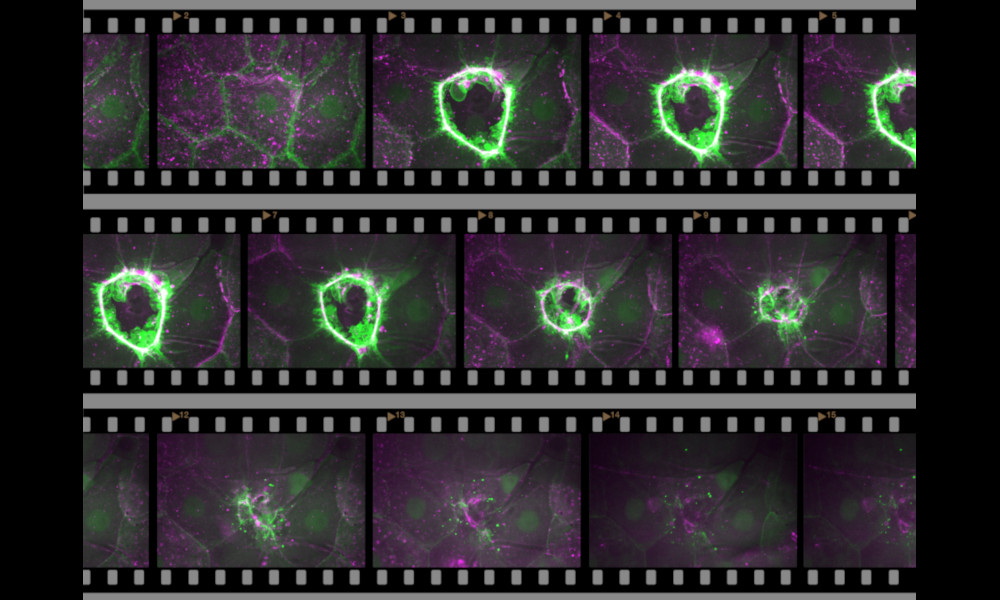
Time heals all wounds

We’ve all had wounds at certain times in our lives. Usually they heal due to the self-repairing mechanisms in the body. But observing and learning how this process happens in a living organism is challenging.
Parisa Kakanj, a postdoc in the Leptin group at EMBL Heidelberg and at the University of Cologne, recently developed and published a technique to study wound healing in living fruit fly larvae. The larvae already have highly developed organs, yet their body is still transparent, which allows scientists to observe organs inside the living animal under the microscope.
When Parisa’s sister Mona – who is a visual artist – saw the images her sister created as part of her study, she realised that they could be repurposed to create a work of art. This picture presents several images showing the closure of a wound in the form of a filmstrip.
Credit: Parisa Kakanj, Mona Kakanj/EMBL
If you have a stunning picture of your science, your lab or your site, you can submit it here.


